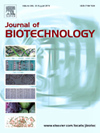The Journal provides a medium for the rapid publication of both full-length articles and short communications on all aspects of biotechnology. The Journal will accept papers ranging from genetic or molecular biological positions to those covering biochemical, chemical or bioprocess engineering aspects as well as computer application of new software concepts, provided that in each case the material is directly relevant to biotechnological systems. Papers presenting information of a multidisciplinary nature that would not be suitable for publication in a journal devoted to a single discipline, are particularly welcome. The following is an outline of the areas covered in the Journal:Nucleic Acids/Molecular Biology: Novel contributions in the general area of Nucleic Acids/Molecular Biology will be considered. This includes studies for the physical and functional characterization of genomes, studies on the expression of genomic information in cellular and cell-free systems, the development and application of technologies for the detection of single molecules and molecular interactions (molecular recognition), the development and application of strategies towards the identification of biotechnologically interesting new compounds via chemical synthesis (combinatorial strategies in particular), molecular design and evolution, as well as molecular bioinformatics. The development of automated systems for the above mentioned fields may be of particular interest.Physiology/Biochemistry: This section covers biochemical and physiological studies of metabolism and enzymes as relevant to the product formation including intermediary metabolism of micro-organisms, tissue culture cells and cell-free systems; bioregulatory investigations at the molecular level including transciption/translation control and growth/product-synthesis relationships; design and engineering of products by molecular strategies with emphasis on protein/enzyme engineering and modification; quality improvement of non-protein products; engineering of cellular modification and transport systems such as post-translational protein modifications as well as protein and metabolite secretion; novel (molecular) strategies of screening for new or modified products (e.g. pharmaceuticals, bioactive compounds, enzymes) including application with product development based on enforced evolution and combinatorial strategies.Biochemical Engineering/Bioprocess Engineering: This section includes studies on transport phenomena, reaction kinetics, design of reactors downstream operations and software applications as well as research on cellular biology and physiology in biochemical processes employing enzymes, microorganisms, mammalian cells, plant cells and tissue. Of special interest is the rational manipulation of reactions through metabolic engineering techniques, the design of specific biocatalysts,
